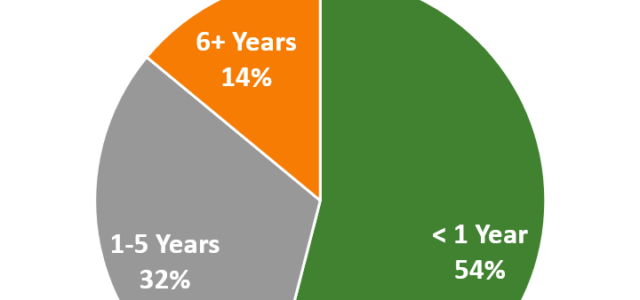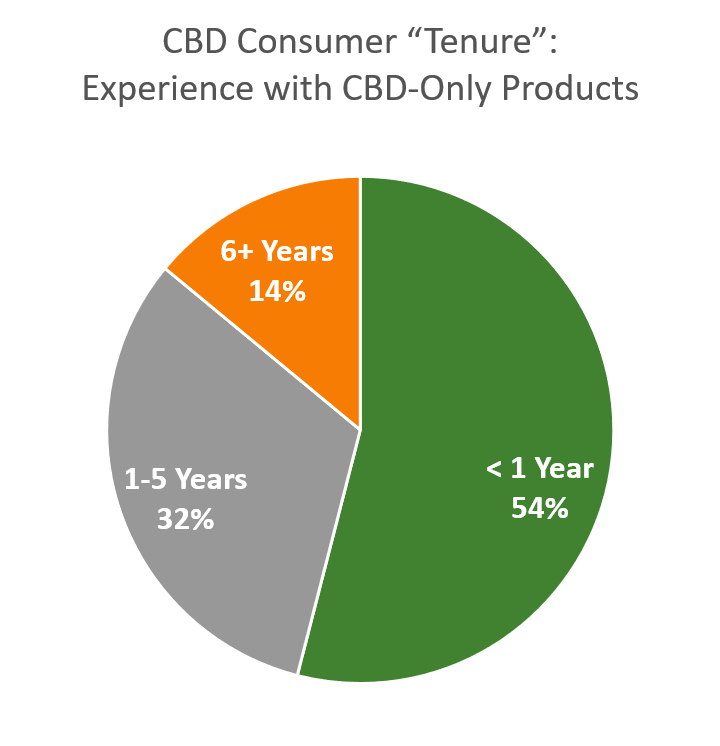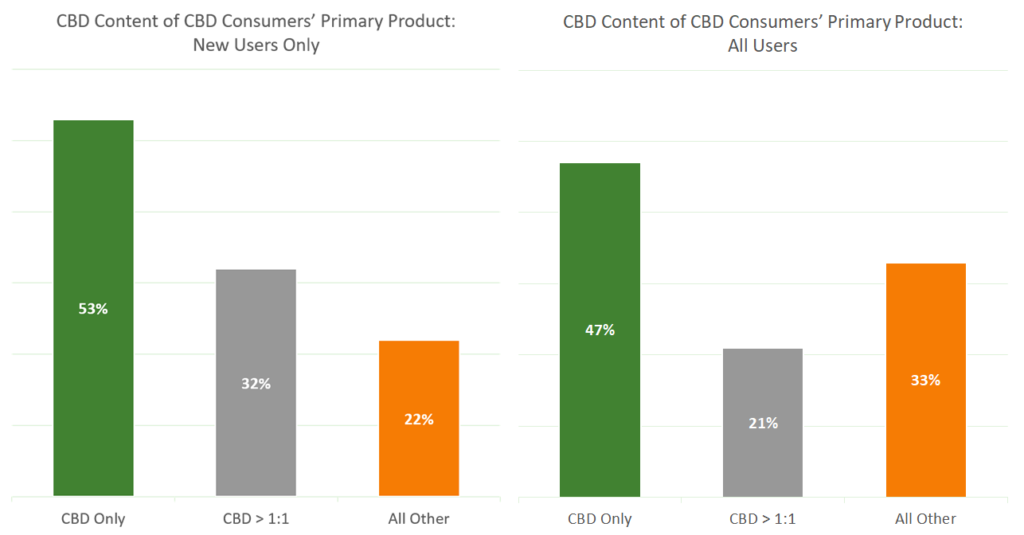
The growth of the CBD market is contingent on any number of factors. Forecasts vary but effectively the only difference is the shape of the so-called hockey stick. But where is all the growth coming from? If the market is to reach any of the forecasts, the growth will be fueled by new users.
Emerging consumers for an emerging market

For many consumers, CBD is new to their lives. For over half (54%) of current CBD users, their tenure with the product is less than one year, with 86% of current consumers having used for less than 5 years.
This relatively “new” consumer spurs optimism for growth in CBD. As the market continues to expand with new products and awareness, it’s likely that the share of new customers will only increase.
New solutions to old aches and pains
New (less than one year) users of CBD products are seeking new solutions to recurring and chronic conditions. While anxiety and insomnia might come and go, aching joints from arthritis and chronic muscle pain call for more than a spot solution. As new users get comfortable with the diverse ways in which CBD products are manufactured and the wide array of product types available, it’s likely users will assemble a toolbox of solutions, each geared to a need state.
Conditions new users treat with CBD
New users appear to view CBD foremost as a palliative solution to mental and emotional health conditions.
- Anxiety (44%)
- Depression (29%)
- Chronic joint pain / arthritis (27%)
- Chronic muscle pain (23%)
- Insomnia (21%)
As users gain experience with CBD, especially as topicals enter into mainstream channels such as drug stores following the recent announcements by big box chains like CVS and Walgreens, expect to see the order of conditions in the list above shift. However the handful of key need states – addressing sleeplessness, for example – remain constant across all consumer groups.
Products containing THC play a smaller role for new CBD consumers
As CBD consumers spend more time incorporating CBD into their personal wellness regimen, the presence of THC alongside CBD takes on greater importance. This aligns with what observers might expect: new CBD consumers are generally less familiar with cannabis in general and thus less likely to identify a go-to preferred product as containing much (if any) THC. Zooming out shows a different picture: taken in total, CBD consumers might prefer (33% of the total consumer base does, in fact) products that contain a THC:CBD ratio of 1:1 if not an even higher concentration of THC.

Not surprisingly, more experienced users show greater understanding of CBD’s subtleties. (That is, some of the finer points, but not all.) For example, veterans (6+ years of CBD use) expressed an higher understanding of the entourage effect – but not by much: 30% compared to all CBD consumers of whom only 24% felt confident in their understanding of the entourage effect. This speaks to issues we have touched on previously in this space, such as how consumers view sources of information about CBD products which can be found here.
For more information on CBD consumers, product and attribute preferences, custom segments and demographics, and additional data on the new consumer, download a free copy of The CBD Consumer Experience here.
MJ Shareholders
MJShareholders.com is the largest dedicated financial network and leading corporate communications firm serving the legal cannabis industry. Our network aims to connect public marijuana companies with these focused cannabis audiences across the US and Canada that are critical for growth: Short and long term cannabis investors Active funding sources Mainstream media Business leaders Cannabis consumers











No comments so far.
Be first to leave comment below.